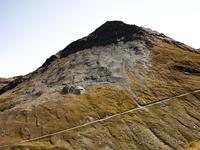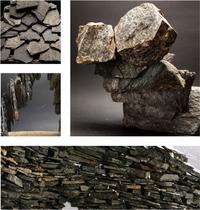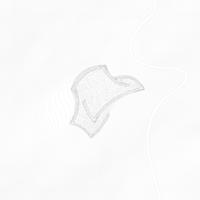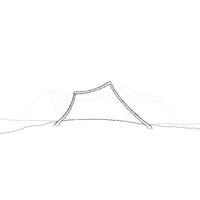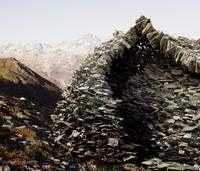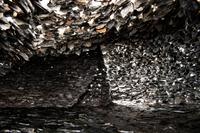Results HS19
Julius Henkel
ADHESIVE ROCKS
The project aims to meet the question of what to build with the question of how to build.
The Furkapass is highly visible, perceived as a place that is dominatly characterized by the fundamental forces of nature. As a place where tectonic movements are conspicuously visible on the surface, the main crest of the alps forms the european watershed and the rhone glacier is feeding the western part of europe - human culture finds itself confronted with a scale that can hardly be grasped. As the rocks are almost as old as the world itself, building with stones is almost as old as human culture. Referring to a society and a building culture that is characterized by the overpowering desire for efficiency the project explores the possibilities of structural adhesives as a second building material, out of an unbroken fascination for the technical and scientific progress as well as a an understanding of the alps as an artificial nature. Approaching the field with a basic investigation into the myriad of applications of glue, the project channelled towards structural bonding of rocks.
In collaboration with the company 3M, I explored the existing techniques of structural joining of stone material. After many tests - and failures - I developed a technique that both pays tribute to the different properties of stone and glue, that are in a way opposed in their actual nature. While adhesives work best under tensile loading, stone can mainly take compression loads. Especially the rocks on site, which are metamorphic and in that way especially fragile in direction of their foliation. The developed technique tries to determine this problem with a system that is thought as a tensile reinforcement in the direction of the foliation. Drillled holes in which the glue is injected ensure a certain tensile strength and allow to think of tensile constructions that are atypical for stone constructions. Using a second property of adhesives, a certain waterproofing can also be achieved. The proposed project investigates these potentials with the aim to push the boundaries of contemporary building techniques.
The proposed structure is thought in different interdependent steps. Since glue is a highly efficient material, it allows the project to remove itself from a building site that has to be connected to an infrastructure, usually needed to provide the building material. The rocks, the second building material for this project, can be found on site. The choice, where to build, results of the analysis where enough overground stone material is accessible and usable. It turned out that the slope below the mountain peak of Blauberg provides enough material for the demanded building volume of the assignment. In the same sense the rocks on site are understood as the temporary structure that should be part of the project persuant to the exercise. A second criterion, the topography of the site, affects the choice of possible building sites. A small plateau next to the available rocks serves as the outline of the project. The structure evolves out of this geometry and accomplishes the architecture with the developed building technique. The generated space is not defined by a specific program, but could be used both as a shelter or location for any kind of events.
The following chairs have also contributed to the development of the project:
Bautechnologie und Konstruktion, Dozentur Mettler / Studer Kunst und Architekturgesichte, Prof. Philip Ursprung
